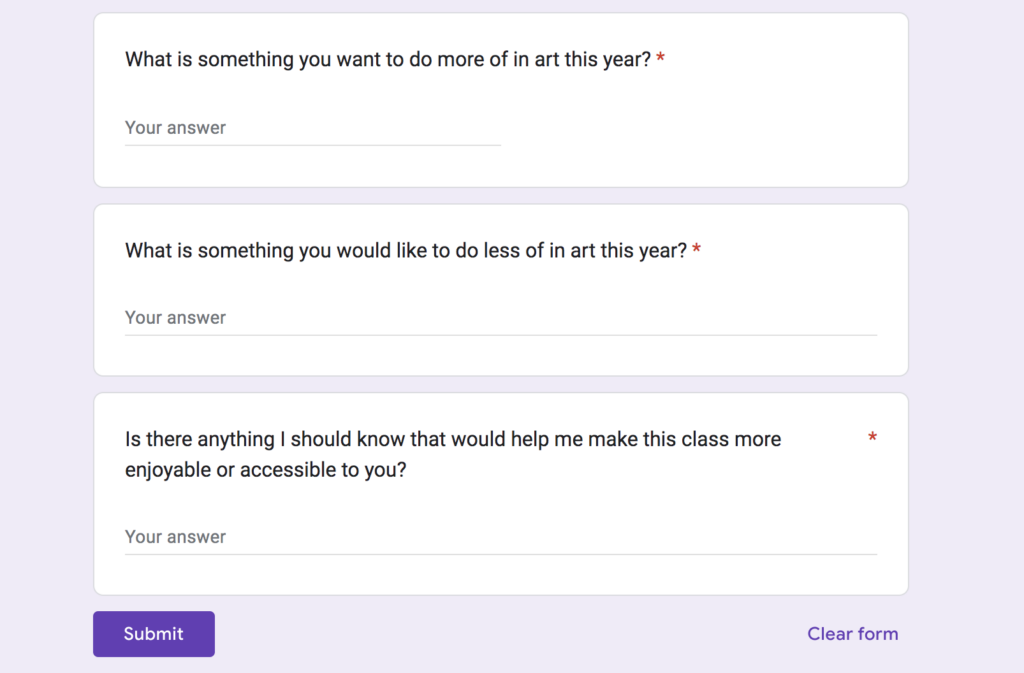Here is a video created by the art teacher candidates exploring educational technology in our subject area!
When considering the options for my final tech tutorial, QR codes are what stood out to me! I have previously thought about QR codes and how they may be helpful in an art, English and textiles class. But first, what is a QR code?!?
QR codes (or Quick Response codes) are two-dimensional codes that you can scan with a smartphone. The code contains information, usually a site address, and once you scan it, the code connects you with a resource on the web.
https://digital.gov/resources/introduction-to-qr-codes/
QR codes can be found in many places serving a variety of purposes as a quick and easy way to connect people to sites online. I can imaging that QR codes in the classroom can be a helpful tool for directing students towards online resources.

“8 ways to use QR codes in the classroom” from the Norther Illinois University Centre for Innovative Teaching and Learning outlines a variety of ways QR codes can be used in the class. The article helped me come up with a few ways that I could use QR codes in English, art and textiles class:
- in a slideshow to connect students to the resource, text, activity, google form etc. within a lesson
- connect students to a google doc for a collaborative activity
- engage students in tools such as kahoot, mentimeter, poll, padlet etc.
- connect students to resources and tutorials (e.g. in textiles class, a QR code on a sewing machine could help students remember how to thread a bobbin)
- interactive learning, such as a gallery walk activity
Example:
Picture a textiles classroom where QR codes can be found around the room. For example, there are codes on the sewing machines which link to tutorial for winding a bobbin, threading the machine or adjusting the tension. At the cutting table, a QR codes links to a video on cutting out sewing patters.
In this example, QR codes in a textiles class could support students’ by directing them towards helpful resources.
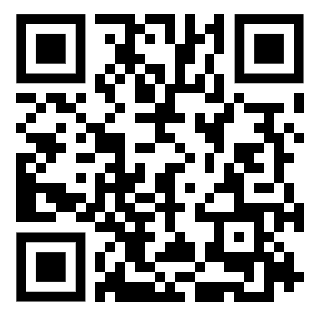
This week, Michael discussed the importance of having a system for storing and organising your files. I couldn’t help but feel a little attacked. I wholeheartedly agree with Michael’s advice, but file organisation is not one of my strengths. I am guilty of having disorganised files and no system for organisation. Making matters worse, my phone, computer, icloud and google drive are at max capacity and my outlook account has almost 6,000 emails. It is overwhelming just to think about it :'(

But I do believe that I have the potential to change my poor digital habits. Entering the teaching profession certainly motivates me to develop an effective file organisation system for my work files at the very least.

Thank you for the reminder to tackle a task which I have been avoiding for a long time! Maybe I will work on it over the winter break…
This week we had Kaori Lau and Tracy Humphreys in our class to discuss BCEdAccess and accessible technology. It was great to have a class on this topic as finding ways technology can support students with disabilities in school is very important.
The talk began with an exercise that illustrated the exclusion that people with disabilities often experience when accessibility is not built into the structure/design of experiences and spaces. Kaori and Tracy then presented on the ways that technology can support inclusivity.
The Kaori and Tracy’s talk, and the contributions from the class were helpful for me in considering the ways technology and accessibility work together. Tracy and Kaori also discussed some of the challenges with bringing in accessible technology such as lack of access (funding), lack of support (from families or schools), privacy concerns, resistance to change and the perception of technology as only a distraction.
inclusion should be part of the design, not an after thought.
Tracy and Kaori did offer some possible solutions to these challenges, such as: normalising accessible technology, advocating for funding, make the technology accessible to all, provide training for families and teachers.
This week, Michael discussed the value of incorporating video and images in lessons.

Art
From my perspective, a lot of Michael’s talk was not new to me because my educational background is in Visual Art (obviously highly visual). Incorporating images naturally fits into Art lessons as much of learning Art is looking at the works of other artists. However, it is interesting to consider seeking out new forms of multimedia to include in art lessons. Videos demonstrating material techniques, artist explaining their work and 360 tours of art galleries are just a few examples of multimedia that can be brought into Art classes.
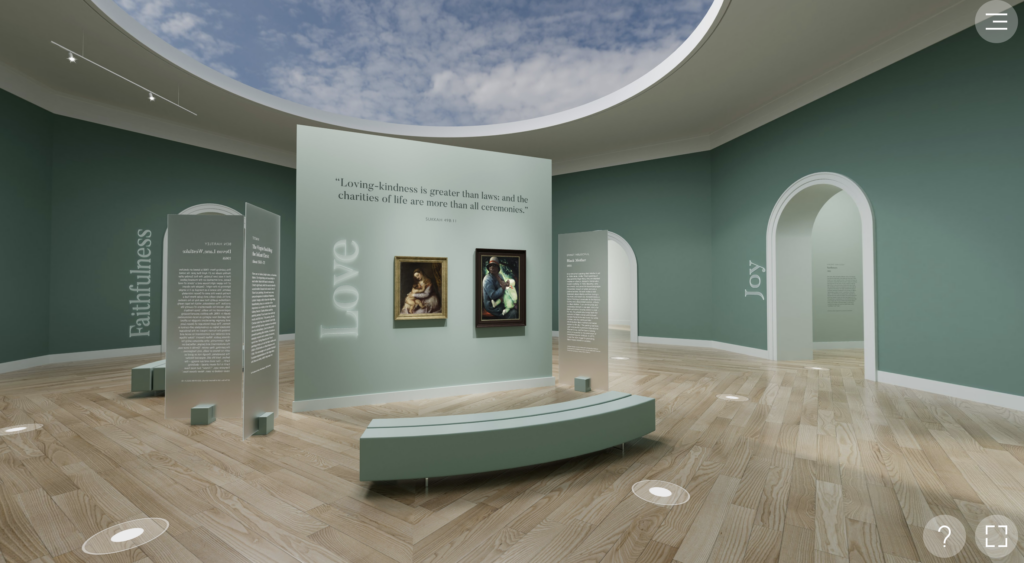
English
My other teachable area is English, and I am very excited by all the ways multimedia can be brought into the classroom. Within the English Language Arts curriculum there are whole courses dedicated to the study of new media. Bringing in a variety of media formats is valuable in all English class and especially in English New Media.
This week, we had Jeff Hopkins guest lecture in our class. Jeff is the founder and co-principle of the Pacific School for Inquiry and Innovation (PSII). Jeff discussed his background in the public school system and his desire to explore and develop an alternative approach to schooling. Jeff left the public school system to start PSII based on a model of inquiry based learning.
The following video comes from PSII’s website and explains the inquiry process.
I found Jeff’s perspective on learning/teaching to be very interesting. I particularly appreciated the focus on student-centred learning which gives students the agency to determine their own goals, approaches and interests. I appreciated hearing that many students have found success at PSII after struggling to learn in the public school system. I still found myself hesitant about going all in on inquiry-based schools.
My main concerns where about accessibility and crucial topics which all students should be given the opportunity to learn about. In regards to accessibility, I wondered how PSII works for students with high support needs and wether they’ve had students on the Evergreen diploma pathway. My other concern was about how they insure all students learn about important topics such as Residential schools, the Holocaust, Japanese internment in Canada etc. For example, Residential school denialism is a problem in Canada, and teaching about it in schools is crucial for Truth and Reconciliation.
I guess where I’m at after Jeff’s talk, is curious about how we can bring inquiry based learning more into the public school system (because if it’s so good it shouldn’t be available only to people with the money to pay for private schooling) and also curious about more alternative approaches to schooling.
The Technology in Education course has encouraged me to consider the ways in which technology can be brought into art classes to support and enhance student learning. Kahoots are a popular teaching tool used in many subjects but I have not seen them used in art class, so for this technology exploration I wanted to consider the potential use of Kahoots in art. After exploring Kahoot and considering how I might introduce it to an art class I came up with the following possible uses:
- Assess understanding of new content (perhaps following a lesson)
- Assess prior knowledge of concepts in art
- Fun activity to familiarise students with popular artwork/artists
To practice making a Kahoot, I created a quiz which could be used following a lesson to check for understanding. The quiz I created would test students on their understanding on composition strategies used for developing artwork.
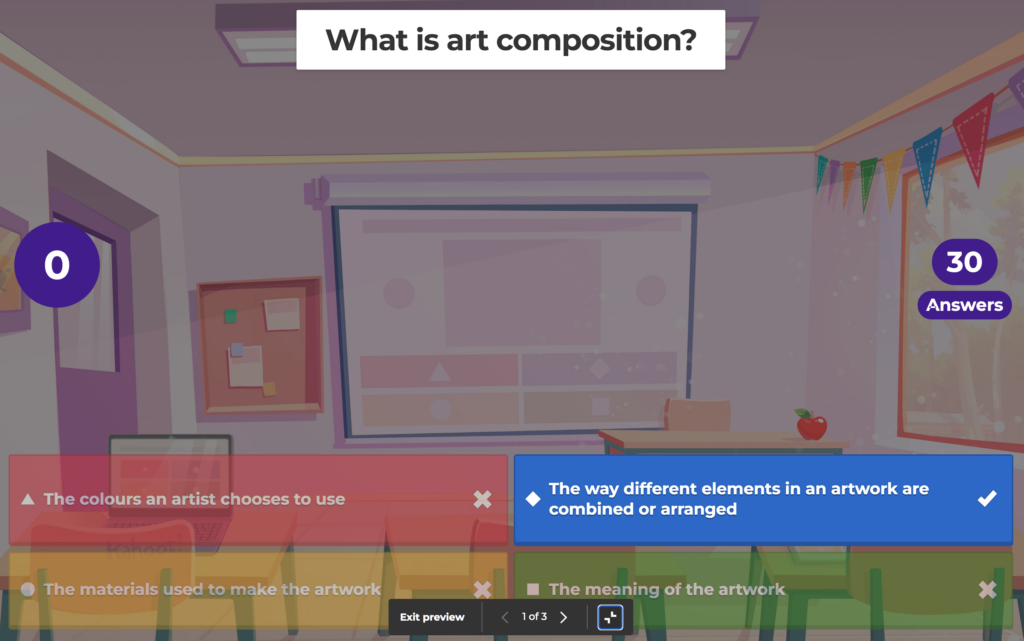
I found the process of creating the Kahoot to be relatively intuitive, although not having access to premium features greatly limited the options and functionality. I was surprised to find the variety of question types which could be useful for creating Kahoots that do more that just assess student understanding a basic concepts/definitions.
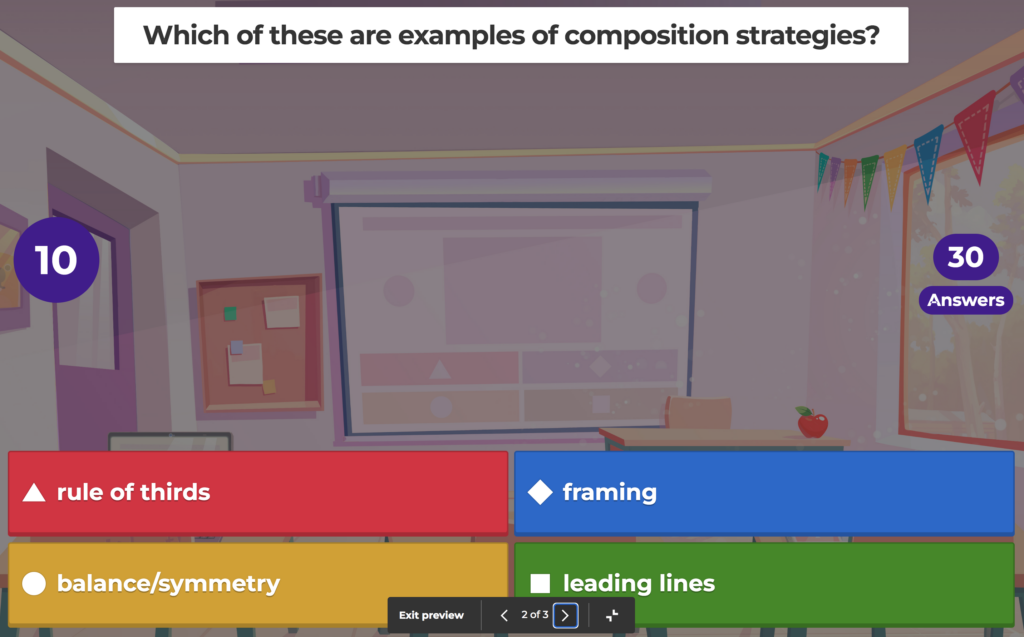
For this example, I created a Kahoot which I imagined could be used following a lesson on art composition strategies to check for student understanding of the concepts and terminology. I imagine that using a Kahoot after giving a lesson could be helpful to engage students in the content in a fun and exciting that is low stakes.
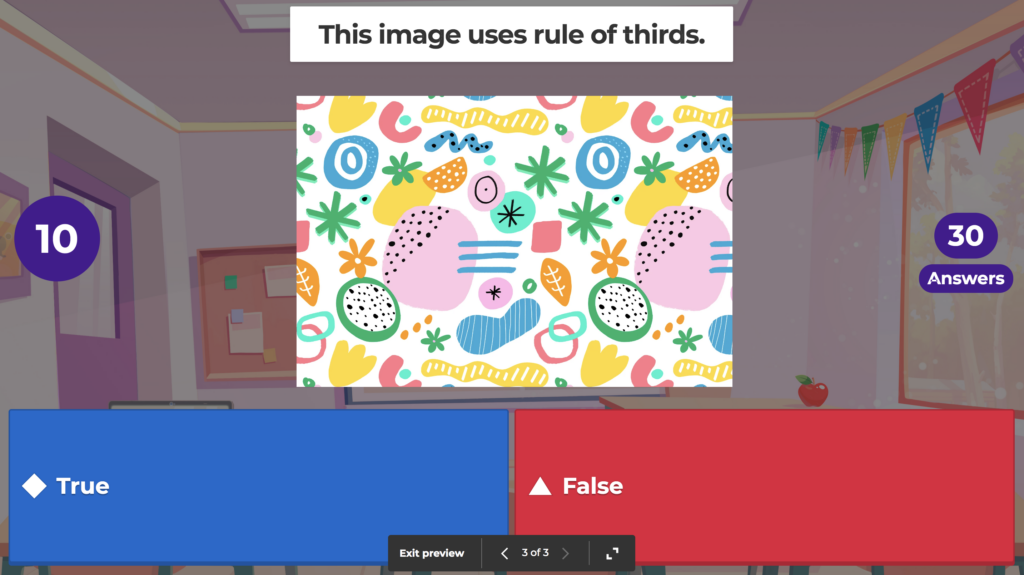
Ultimately, I believe that using Kahoot in an art class could be a helpful teaching tool for some lessons and learning goals. Its usefulness however, would be limited to the teaching/learning of art theory, concepts and definitions and would not help with the teaching/learning of physical art skills. Kahoots may be challenging to bring into the classroom however, as new the phone ban limits the use of personal technology in schools, and not all students have access to a device.
This week, our guest lecturer Trevor Mackenzie gave an insightful presentation on facilitating free inquiry projects in high school classrooms. The ideas that impacted me the most however, was his advice on giving students feedback. Confirming what I’d heard in other classes, Trevor emphasized the importance of separating feedback from assessment. He also outlined how his process of determining a grade at the end of the semester looks like. Trevor’s approach involves scheduling one on one student conferences in which the student reflects on their learning and work throughout the semester. Together, Trevor and the student then determine what their grade will be for the class. I really appreciated hearing how Trevor handles assessment in his classes. I will be reflecting on his lecture and considering how I might incorporate elements of his teaching practice into my own. Thank you, Trevor!
Learn more about Trevor Mackenzie and his work!
This week’s guest speaker Jesse Miller gave an intriguing presentation on the use of social media by youth, and the presence of technology in schools. My takeaway from this presentation was Jesse’s firm assertion against banning phones and the value of social media for youth and adults. I entered Jesse’s presentation with an opposing view on social media and technology and left it with my mind unchanged. However, I believe hearing and considering opinions that differ from your own is important and I appreciate the opportunity Jesse created for me to question my own beliefs.
In a nationally representative survey of girls aged 11–15, one-third or more say they feel “addicted” to a social media platform
Social Media and Youth Mental Health: The U.S. Surgeon General’s Advisory, p.9, 2023
My key issue with Jesse’s presentation was that he neglected to include reference to recent studies that challenge his opinion. For example, Jesse denied the proposal that social media can become addictive for youth, and argued that social media does not cause any additional harm to youth than could be reasonably expected in high school. In 2023 however, the United States Surgeon General released a health advisory about the effects of social media on youth mental health. In that advisory, multiple references are made to studies that show social media’s potential for causing negative mental health outcomes and addictive behaviour in youth.
Excessive and problematic social media use, such as compulsive or
Social Media and Youth Mental Health: The U.S. Surgeon General’s Advisory, p.10, 2023
uncontrollable use, has been linked to sleep problems, attention problems, and feelings of exclusion among adolescents.
Though there are positive outcomes from the heightened connectivity that social media provides, these negative impacts on mental health cannot be overlooked.
I have learned in my Art Curriculum course that getting to know your students and their interests is crucial to developing engaging lessons. The use of a survey to gauge individual student’s prior knowledge, experience and interest was suggested by my Professor as a simple way to collect information at the start of the semester. Inspired by this suggestion, I have explored the use of Google Forms to create such a survey.
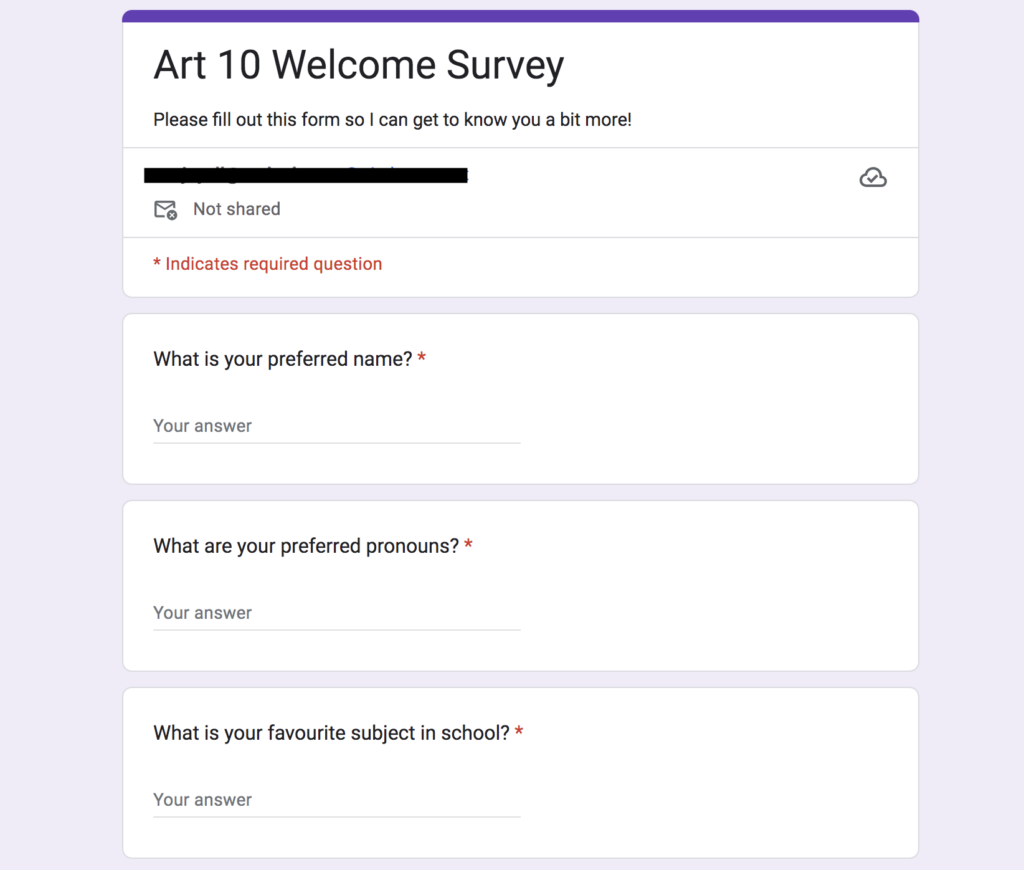
I found Google Forms to be a simple and intuitive tool for creating a welcome survey to collect information about students’ interests and preferences. Google Forms allows for a variety of question types such as short response, multiple choice and linear scale. I tested different question types in my form such as multiple choice for indicating a favourite type of art and the linear scale for ranking how much they enjoy art.
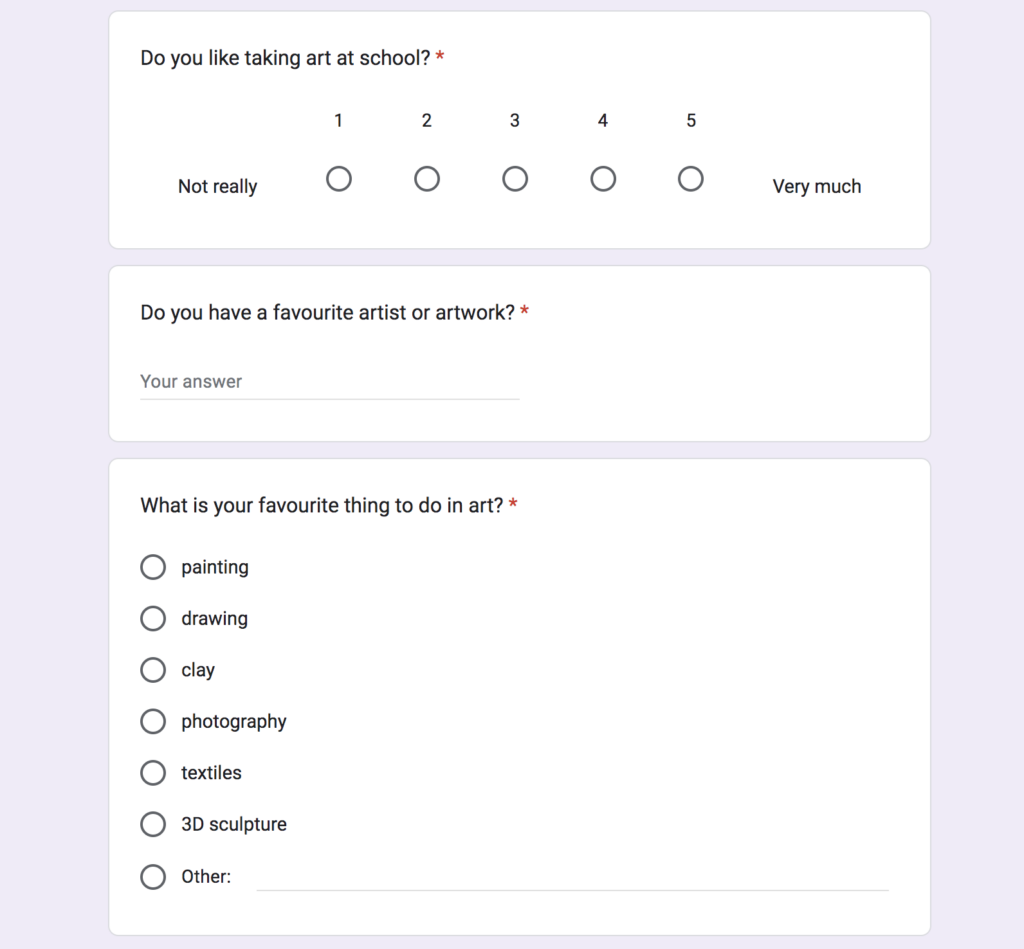
I believe that Google Forms would be a useful tool in my future classes to easily collect information from students. I can imagine creating other useful forms such as for self assessment, formative assessment and class feedback.
